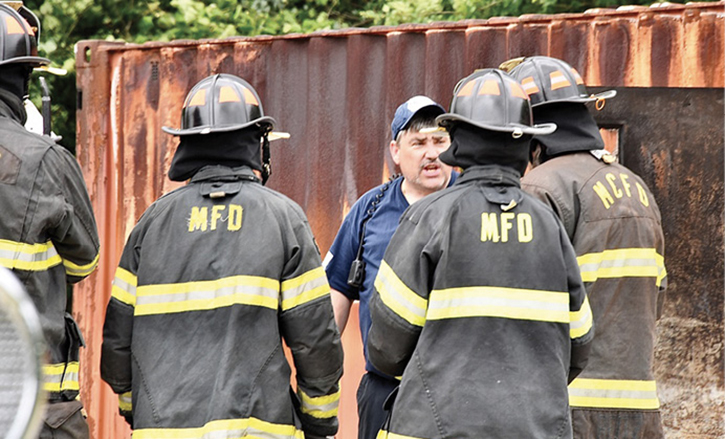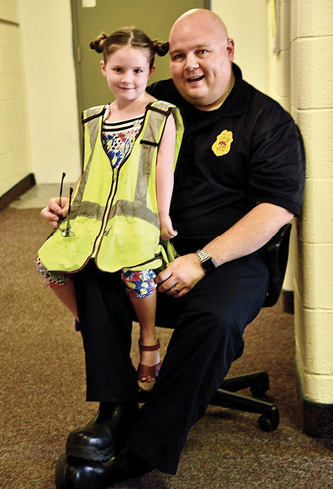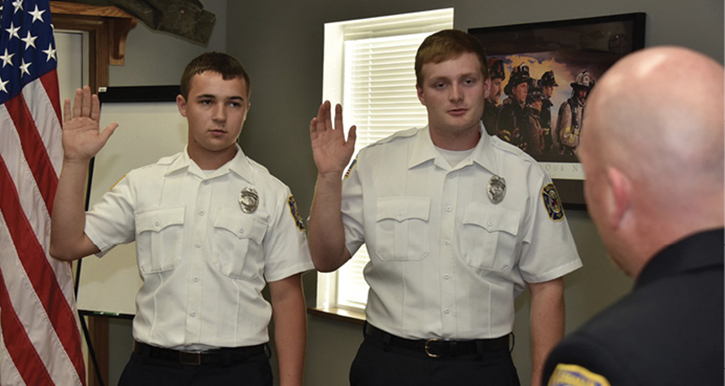
VOLUNTEERS CORNER ❘ By JOHN M. BUCKMAN III
These days, if you’re leading volunteers, you can’t simply order them around and expect them to do what you want. Leading volunteers requires a collaborative approach to direction. You must develop volunteers to “buy in” to the organization’s mission, vision, and values. Buy-in is critical to their performance.
Volunteers have some investment, but if volunteering for the fire department becomes less fun, they may seek other opportunities that provide a more satisfying experience. Volunteers who buy in become dedicated and productive members who make the personal sacrifice for the benefit of the organization. Some volunteers who don’t buy in might follow your directions while you are watching, but once you are out of sight, they will do what is convenient for them. More than ever before, today’s successful leaders must win people’s cooperation.
RELATED FIREFIGHTER TRAINING
The Future of Leadership in the Volunteer Fire Service
The Professional Volunteer Fire Department: Leadership, Part 1 | Part 2
As a leader of volunteers, you can inspire and motivate them to adopt the organization’s mission as a part of their personal mission. This inspiration involves changing the way people think about themselves and the organization. When they are inspired, they want to make a positive contribution to the team and the organization. Inspiration is about the values they believe personally and about the organization professionally.

(1) Training is an important motivator, and hands-on training is most effective at motivating students. (Photos by author.)

(2) Communication and expectations are important motivators. How a leader communicates can increase a member’s performance. Most of us will meet expectations if they are explained.
Motivation involves moving people to use internal or external incentives to entice them to action. This is not always the preferred way to motivate individuals, but it is a necessary technique. Even those members who believe and act to support the organization’s mission, vision, and values will need encouragement and appreciation, which is the most important action you can take here. They will also want something in return for their efforts. The most important action you can take to motivate people is to show them appropriate and sincere appreciation.
The Specifics of Motivation
So, what does it take to motivate people? To start, be clear in communicating your expectations. One of the most frustrating things highly motivated people experience is when a leader expects high levels of performance but does not tell those people what to do and when to do it. You do not need to tell highly motivated people how to accomplish an assigned task.
Two of the best ways of motivating people follow:
- Convey clear communications with specific and realistic expectations. To motivate people is to expect some type of action.
- Balance your expectations with “life priorities.” These priorities are faith, family, and work. (If you are a volunteer firefighter, you have a fourth “life priority”: the fire department.)
Limit the amount of time you expect volunteers to be away from spouses and children; the work at the fire department will never be finished. There will always be work to do tomorrow. So, focus on the important things. For instance, focus on asking volunteers to work on the things that really make a difference for the members, the community, and the department.
Leaders don’t ask people to do what they themselves aren’t willing to do. That old statement still applies to today’s society and is critical in inspiring others to work hard for you. Don’t tell your people to wash the floors while you sit in your office. Don’t tell your people to train daily for two hours while you stand off to the side talking on the phone. Roll up your sleeves and share the load!
Fear as Motivation: Pros and Cons
Fear focuses people’s attention and can be an effective motivator. On the other hand, it is not a good long-term motivator and certainly not effective if you are trying to inspire someone.
However, it can be effective if used sporadically. One component of fear is to use “threats” as an incentive to move people to action. But again, it is not effective over the long term. If you keep resorting to using fear, you’ll end up demotivating people.

(3) Recognition is important to all of us. Here, a member of the fire department receives funding for a university scholarship.

(4) Always remember the family when setting expectations for members. Expectations should be realistic, pertinent to the position and the community, and achievable while maintaining a balance between fire department and family priorities.
People are best motivated by and prefer positive emotions like excitement, camaraderie, pride, a sense of belonging, and the thrill of achievement. The best reason of all to motivate and inspire others is always personal. You may talk about something as intangible as the camaraderie that comes from having achieved something important together.
I have talked with leaders who say, “My people were not motivated.” When digging deeper for a root cause for these accusations, this perceived lack of motivation stemmed from the leader’s behavior. For example, subordinates may become disillusioned if their chief is paid a stipend and then expects the volunteers to do the work around the station while he sits in his office or doesn’t show up.
Another example came from one of the chiefs with whom I spoke who shared a training report: The person with lowest attendance at the training was the chief. Members will mimic their leader’s behavior. Training can be motivational. It must be organized, relevant, taught by competent instructors, and be hands-on as much as possible.
Also, how you motivate people is sometimes dependent on their age and experience. The older generation sometimes takes a stereotypical view of the younger generations and places them in a single box that says they are lazy, not committed, and use their phone and the Internet for almost everything they do. It is easy to assume that being lazy and unmotivated is a natural consequence of being young in today’s world. Such thinking, while understandable, is essentially misguided.
Today, our young people have so many more opportunities than previous generations. Shopping malls, computer games, sporting events, and socializing all compete for young people’s time. Young people are some of the most hardworking members of society. They work on the priorities that are important to them, and they will work at their own pace.
A lot has changed. Despite all these changes, today’s young people are no different from younger generations of the past. They might think and act differently, but think back to when you were less than 25 years old: Did you think and act differently from how your mother and father thought you should think and act? Your answer may be, “They were sometimes frustrated when I did not act exactly the way they thought I should.” Some of these changes relate to the context in which they grew up and the significance of what they are expected to do.
Very few young people completely lack motivation. What many young people do lack is the motivation to do tasks that don’t matter, don’t seem important, or are about satisfying an agenda that doesn’t relate to them. These young people will ask, “What’s in it for me?” This is the most important motivational ingredient of them all! You had better have a good answer to this question. If they don’t understand what the task has to do with them or their well-being, then it will be a struggle for them to find the desire to carry it out. Young people want to feel significant. They want to demonstrate that they matter and can make a difference. Many of the problems young people encounter today stem from their desire to be significant being ignored or diminished. If your younger members understand their value to the task, you will have little problem motivating them to do it. Young people do not regard making their officer’s or parents’ life easier as something of high value.
Make It Fun!
Sometimes, we all do work for no other reason than it needs to be done. So, make it fun! This motivational principle applies to people of all ages, not just younger people. Most people are more motivated to do something fun rather than something boring. Fun is the key ingredient to getting younger people active and motivated to participate. Just be sure to show interest and value in whatever it is that your youngsters consider interesting and fun. Inspiration appeals to the best aspirations of people, and its underlying, often unspoken message is, “You can become what you want to be.” No reward is promised other than the reward that comes from within—the sense of personal satisfaction. Personal satisfaction is a tremendous motivator.

(5) When a member is smiling and gives a thumbs up, you can bet he is motivated and will share his motivations with other members and the community.

(6) To many, ceremonies for accomplishments, promotions, and other activities can be a motivating factor.
In Maslow’s Hierarchy of Needs, personal satisfaction is one of the greatest reasons people work to be involved and successful. As a leader, when you talk about values, identity, and personal and organizational goals, you are trying to inspire them to action. Use the following attitudes to motivate subordinates in a positive manner:
- Expect the best from yourself. Your reputation and character will inspire volunteers more than anything else. The only way to expect the best from others is to expect the best from yourself.
- Trust people and have confidence that they will make the right choice. When trying to inspire people, you are empowering them to be their best. Trust that they will do their best.
- Challenge people with inspiration. People aren’t inspired to do ordinary things. You will have to challenge them to use their creative instincts to solve problems. People who are inspired will make the necessary sacrifices to be successful.
When there’s an immediate need for action, motivate them. When you want to shape people’s identity with the organization, inspire them. If you are going to be effective and successful at leading a group of volunteers, understand the best ways of doing both.
JOHN M. BUCKMAN III has served 47 years as a volunteer firefighter and 35 years as chief of the German Township (IN) Volunteer Fire Department. He was president of the International Association of Fire Chiefs (IAFC) from 2001-2002. He has presented on fire topics in all 50 states, Canada, Dominican Republic, Mexico, and China. He is also director of government and regional outreach for IamResponding.com and education coordinator for the IAFC Volunteer and Combination Officers Section.

